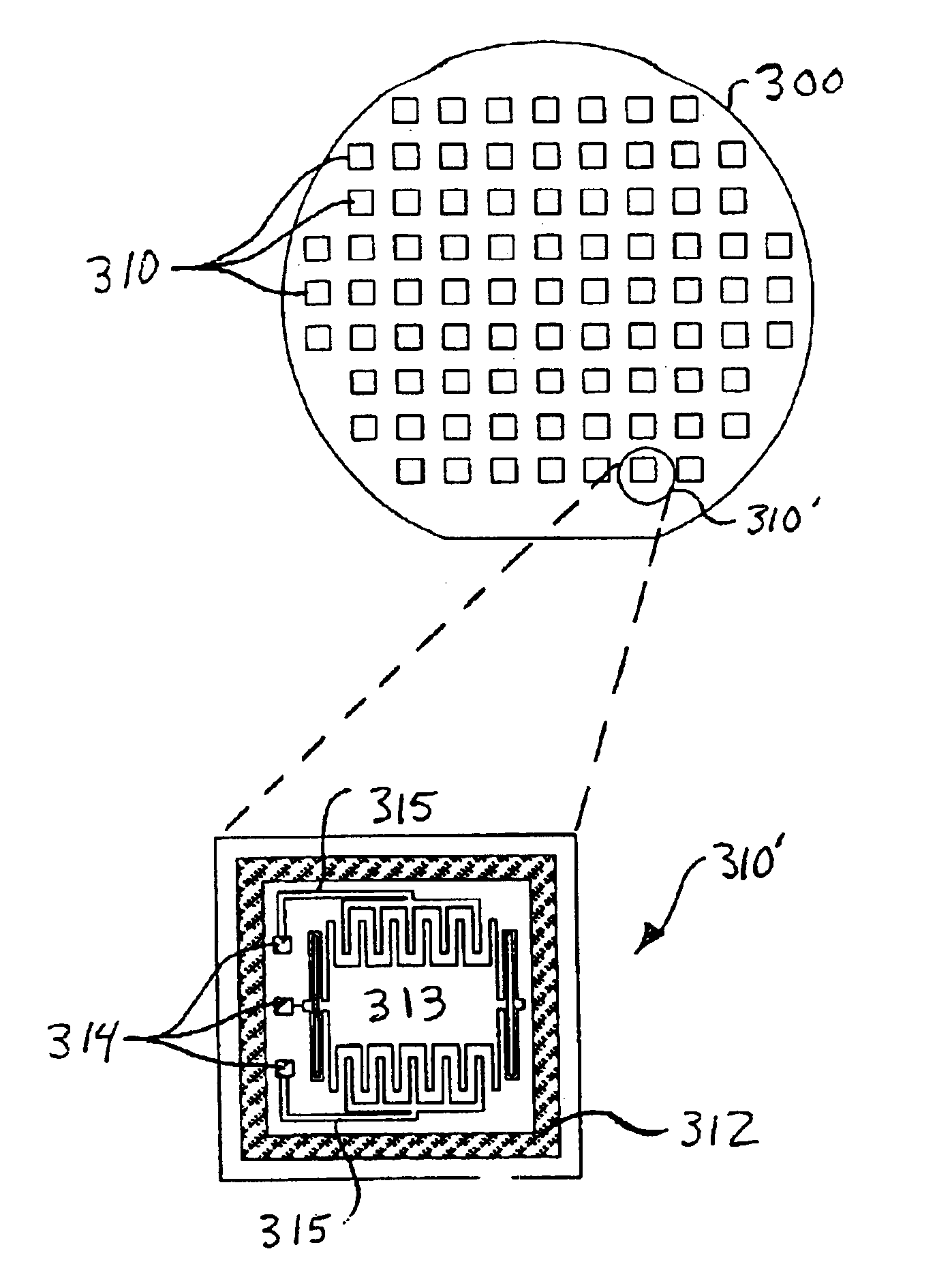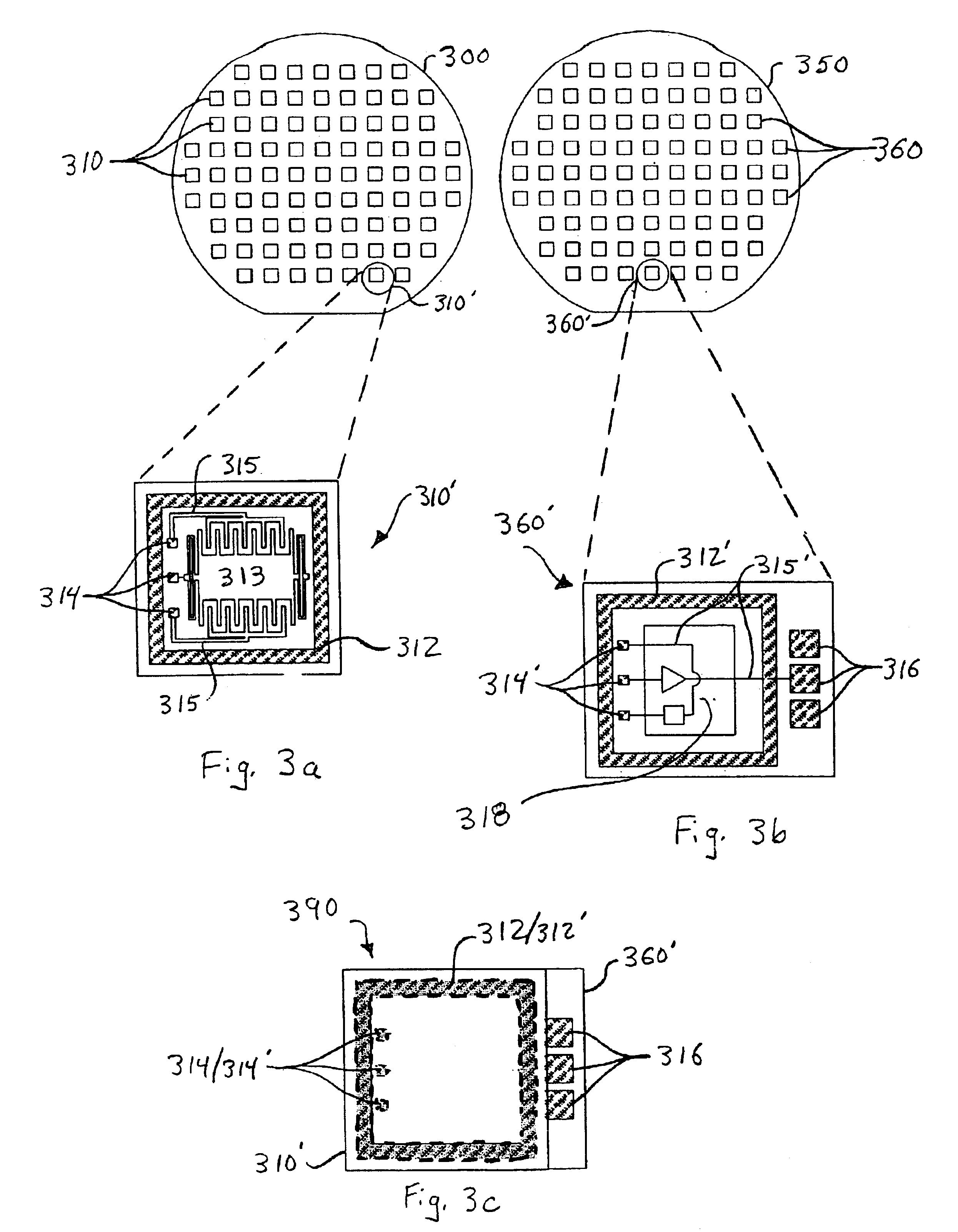Microelectromechanical systems using thermocompression bonding
a technology of thermocompression bonding and microelectromechanical systems, which is applied in the direction of fluid speed measurement, instruments, coatings, etc., can solve the problems of microelectromechanical devices, mems devices are even more vulnerable to contamination and moisture, and cannot be encapsulated in a typical injection-molded plastic package, so as to reduce parasitics, reduce parasitic capacitance, and reduce parasitics
- Summary
- Abstract
- Description
- Claims
- Application Information
AI Technical Summary
Benefits of technology
Problems solved by technology
Method used
Image
Examples
Embodiment Construction
A cross-sectional view of an exemplary pair of substrates 100 in accordance with the invention are shown in FIGS. 1a and 1b, these Figures illustrating structures and principles of the invention applicable throughout the various embodiments of the invention. As shown in FIG. 1a, a first substrate 120 is preferably made of a relatively hard material (such as silicon, silicon dioxide, quartz, pyrex, glass, gallium arsenide or another material known in the art) and bears a plurality of bonding features 160 on an upper surface of substrate 120. These bonding features can assume virtually any desired dimension or shape such as contact bumps, lines and / or sealing rings and are disposed on predetermined locations of substrate 120. For example, the rings can be in the form of a continuous line or wall of substantially uniform thickness and height and may assume an annular (round or elliptical), rectangular, trapezoidal or square shape, etc., as viewed from above.
Further, bonding features 16...
PUM
| Property | Measurement | Unit |
|---|---|---|
| height | aaaaa | aaaaa |
| area | aaaaa | aaaaa |
| temperature | aaaaa | aaaaa |
Abstract
Description
Claims
Application Information
 Login to View More
Login to View More - R&D
- Intellectual Property
- Life Sciences
- Materials
- Tech Scout
- Unparalleled Data Quality
- Higher Quality Content
- 60% Fewer Hallucinations
Browse by: Latest US Patents, China's latest patents, Technical Efficacy Thesaurus, Application Domain, Technology Topic, Popular Technical Reports.
© 2025 PatSnap. All rights reserved.Legal|Privacy policy|Modern Slavery Act Transparency Statement|Sitemap|About US| Contact US: help@patsnap.com



